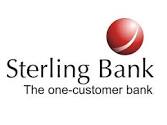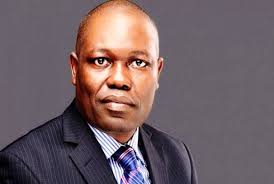What is Holding this Bank in the Laggard Camp?

The inability of its successive leaders to turn it around and to create better competitive values has continued to raise serious concerns among its stakeholders.
For almost two decades, Sterling Bank has been stuck in a rut, operating on a treadmill without making meaningful progress. The bank’s inability to innovate and adapt to changing market conditions has resulted in a lackluster performance. Its struggles are reflected in its financials, with its stock price languishing and failing to inspire confidence in investors.
The lack of visionary leadership and a clear strategy has hindered the bank’s ability to break free from the cycle of underperformance, leaving shareholders to wonder if the bank can ever regain its footing and deliver the returns they deserve; even, the takeover of Equatorial Trust Bank by it did not help its case.
At a first glance , Sterling Bank’s 2024 financials appear impressive or a departure from the past ugly scenario . Its gross earnings were N328.3 billion, and its profit after tax was N37.5 billion. These figures represent a 54% increase in gross earnings and a 73% increase in profit after tax compared to the previous year. The company’s profit before tax also doubled to N44.8 billion, a 97% growth. However, this façade crumbles when the current inflation and exchange rates are factored in. Moreover, the bank’s performance becomes more miserable, especially when compared to its peers. In the same 2024 financial year ,Stanbic IBTC, Fidelity Bank, and FCMB reported significantly higher gross earnings, with N823.3 billion, N1.043 trillion, and N794.8 billion, respectively. Their post-tax profits also dwarfed Sterling Bank’s, with Stanbic IBTC at N225.311 billion, Fidelity Bank at N278.106 billion, and FCMB at N107.9 billion, yet they are all in the same tier 2 Bank’s category.
The most alarming indicator of Sterling Bank’s struggles is its post-tax profit margin, which raises serious questions about the bank’s leadership’s capability.Except in the 2024 financial year when it delivered approximately N20 as profit made from every N100 made at the top line , the bank had consistently recorded embarrassing figures.Between 2018 and 2023 it has recorded N6, N7 ,N8, N10 , N11 and N9.70k respectively from every N100 made at the top line. The implications of this scenario are indeed alarming. Sterling Bank’s Q3 Earnings Per Share,EPS, over the last 5 years has a geometric average growth rate of 0.1%,,indicating slow growth.
The shareholders have borne the brunt, watching in dismay as their hard-earned investments have become a burden, an albatross of sorts without receiving competitive dividends.A consistent track record of paying dividends makes stocks more attractive to investors,but the unimpressive dividend and capital gains available to Sterling Bank stock investors are a glaring stigma that could deter serious investors urge to invest more in Sterling Bank.
Ironically , in a stark illustration of corporate excess, the management of a prominent quoted company has allegedly been indulging in lavish lifestyles, while ordinary shareholders are left reaping meager returns on their investments. Despite lackluster financial performance, top executives are enjoying opulent perks, including luxury vehicles, high-end travel, and hefty bonuses. Meanwhile, the company’s stock price languishes, leaving rank-and-file investors to struggle with paltry dividends and diminishing returns. This egregious disconnect between executive largesse and shareholder value has sparked outrage among investors, who demand greater accountability and a more equitable distribution of wealth. As the disparity between executive excess and shareholder misery continues to grow, questions arise about the company’s commitment to responsible governance and long-term sustainability.
This attitude is hitting hard on the fortune of Sterling Bank. The most obvious and far-reaching disturbing signal from the bank’s feeble performance is the depreciating trust and confidence of stakeholders that translates into a stunted stock price and an embarrassing high funding cost .
When inspired by the performance of a player that is delivering the product or service features that are particularly valued by stakeholders, trust and confidence is built on such a bank’s products and services. For this shareholders, depositors ,borrowers and other stakeholders must be inspired to be favourably disposed to the products and services of banks.
To achieved this and live up to the stakeholders expectations, each player is expected to acquire the relevant strategic capabilities needed to achieve different critical success factors to satisfy each of the five banking constituencies of the deficit, shareholder,surplus,regulatory authorities and the community at large . Trust and confidence is not delivered when the product or service features; particularly valued by different stakeholders , are at a threshold level ,but when they outperform their rivals
However , since its inception into the industry,,Sterling Bank has not displayed any capability to outperform competition, but merely delivering values as a threshold player as indicated above . This has been having far-reaching negative impacts on the trust and confidence reposed on it by some of its stakeholders ,particularly the depositors and shareholders.
Though the bank remains profitable, this has been on a roller coaster and threshold basis.Apart from this , what shareholders particularly value, the capability to deliver a better value for money,still remains elusive with its recurring display of inefficiency that has led to its miserable shareholder value in terms poor dividend and capital gain delivered. This situation has continued to erode its shareholders’ trust and confidence as evident in its stock price performance.
Since it started its operations almost two decades ago, it has remained a company characterized by lowest stock price group ; a company typically with lower market capitalizations that experiences high volatility, leading to significant price swings. The fear over this status is that it carries higher risks that could scare potential investors.
The stock price failure to transit from the lowest -price category to the medium-price tier could be traced to its poor fundamentals .According to Rule 15.29 of The Exchange’s Rulebook (2015), to move to a medium-priced stock , defined as an equity priced above ₦5 per share for at least four of the six most recent months of trading has been difficult for it .The bank’s leadership inability to fundamentally lift its stock price is a clear indication of a loss of investors’ confidence in the company’s ability to generate strong returns.
This may not be farfetched. When a bank’s stock price fails to cross over to the medium stage after almost two decades of its existence, the indication of this is lack of significant growth or progress. This could be due to various factors, such as poor management, inefficient operations, or failure to adapt to changing market conditions.This has been considered to be responsible for its reduced market capitalization, decreased competitiveness, and limited access to capital .
The depleting trust and confidence is equally glaringly evident in the attitude of the depositors towards the bank with excessively high and abnormal funding cost .No doubt, depositors’ trust and confidence on the bank is imperative for boosting deposit volume. Naturally, depositors expect banks to provide optimal interest rates, maturity structures, and liquidity. While Sterling Bank has provided these, they are only delivered at a threshold level.The implication of this is that it is difficult,if not impossible ,for the bank to be competitive when a bank fails to get relatively cheap deposits to beat down its costs and lend safely and profitably.
This scaring signal repeated in its 2024 financial year results. At the end of financial year 2024 ,although Sterling Bank’s customer deposits grew by 39.37% to ₦2.568 trillion , indicating a positive development.But this achievement came at a steeper cost. The bank’s interest expenses on customer deposits surged by 74% YoY. This suggests that the bank had to pay heavily to attract and retain deposits, effectively buying stakeholders’ confidence and trust at a higher. price.
The negative implications of Sterling Bank’s traditionally higher funding costs relative to its peers become clearer when its performance in the core banking businesses are considered. For the banks with strong fundamentals it is usually a different pall game ; no doubt, those brands are known with the capability to attract cheaper deposits relatively ,without much stress due to stakeholders trust and confidence for such banks .
Sterling Bank: Battling A Leadership Question.
The problem of Sterling Bank is simply a leadership question. The most painful issue is the inability of Yemi Adeola , the former CEO of the bank to live up to the stakeholders expectations during his tenure in office despite his high pedigree in that industry. .Though from its inception, Sterling Bank Plc , now Sterling Holdings, an amalgam of some weaklings in the Nigerian banking industry like NAL Bank,Indo-Nigeria Merchant Bank, Magnum Trust Bank, NBM Bank and Trust Bank of Africa , was believed to be lincesed by the regulatory authrities to save those banks from extinction , the appointment of Yemi Adeola in 2007 as its maiden CEO was expected to have led to its turnaround despite Sterling Bank initial limitations.
He was believed to have the wherewithals to grow its meagre resources then and carry out necessary surgery on its heavy burden of toxic loans, not only to sustain its as a going concern but to make it competitive in the industry.
Some analysts and industry observers viewed him as an ideal candidate for that position in Nigeria’s high-pressure banking sector;his curriculum vitae was , indeed , intimidating, showcasing the credentials necessary to succeed and elevate any bank to great heights in the corporate world. Academically, he was exceptionally well-qualified. With years of experience in banking, finance, law, and corporate consultancy, he possessed a unique blend of skills.
But after a decade at the helm of affairs , the hope had collapsed. Since the bank was licensed,the story has been one of disappointment and frustration, a narrative of missed opportunities and stunted growth, with the bank’s shareholders bearing the brunt.Moreover, the hope of its turnaround remains uncertain.Its uninspiring performance becomes more palpable when compared to its peers .
.Two things are responsible for the above miserable performance of Sterling Bank relative to its tier two peers : the leadership inability to competitively grow its resources and absence operational efficiency. Not only Adeola ,other senior management and board leaders that failed to lift the bank from the treadmill are culpable.
What excuse could Adeola and other Sterling Bank leaders offer for the bank’s dismal returns to investors? The only plausible explanation after it was lincesed was that the bank’s financial assets were relatively smaller compared to its rivals at the time of the banking consolidation exercise. Yes , one analyst had argued for the same point . To him with more resources, the bank could have performed better. But some analysts found this excuse insufficient.
First, there are so many examples of companies that overcame seemingly insuperable resource handicaps and built positions of global leadership.
Moreover , possession of resources does not guarantee strategic success. Because strategic capability is essentially concerned with how these resources are deployed, managed ,controlled and in the case of people motivated to create competencies in those activities and business processes needed to run the business.
The position of these analysts is trnable . Size is only an advantage when there’s a stretching aspiration that engenders great creativity in the use of the firm’s resource endowment. Simply put ; just as bigness without stretch and leverage is obesity, smallness without stretch and leverage is impotence.
Although the leadership Sterling Bank should be given kudos for sustaining its going concern with the available resources and competences, however , at a threshold level at which the bank has been operating, the only hope is its survival,. However, while its threshold capabilities are important, unfortunately, they do not of themselves create competitive advantage or the basis of superior performance as these are dependent on distinctive or unique capabilities that competitors find difficult to imitate.
To survive and prosper an organisation needs to address the challenges of the environment it faces with foresight, stretch, and leverage that provide the energy and rationale for proactive advantage building and industry re-engineering. .These are what it needs to achieve the critical success factors that arise from the demands of its different stakeholders.
To be competitive, today’s executives are expected to develop a coherent model to identify and accomplish heroic goals in tomorrow’s marketplace to move their organizations out of the treadmill ; they need a masterful blueprint to ease the tension between competing today and clearing a path toward leadership in the future to do that.
But Sterling Bank has been unfortunate to have a leadership that lacks the qualities necessary for an outstanding success. The bank has remained a laggard as a result of its leadership tendency for preserving the past more than creating the future . And this strategic choice says much about the quality of its leadership strategic capabilities and position in the industry.
The reason behind the bank’s ugly scenario is obvious .When a senior management fails to have a clear and broadly shared understanding of how the industry may be different ten years in the future , when its “headlights”are not shining farther out than those of competitors , when its point of view about the future doesn’t clearly reflect the company’s short-term priorities and when its point of view about the future is not competitively unique”, its fate could not be different.
A tendency for protecting the past than creating the future could be linked to some laxities of a leadership with inability for setting the new rules of competition within its industry, regularly defining new ways of doing business, building new capabilities, and setting new standards of customer satisfaction .
Moreocer , when the senior executives do not possess a keen sense of urgency about the need to reinvent its current business model or to regenerate core strategies , the only option is to maintain its going concern and to focus on the task of re engineering core processes that cannot yield any industry leadership
With more percentage of its advantage-building efforts focused on catching up with competitors than building advantages new to the industry ; when its transformation agenda is set by competitors’ actions than by its unique vision of the future ;and when with its senior managers are more of a maintenance engineer working on the present than an. architect designing the future, Sterling Bank has no better option than to stay in a laggard camp .
Choosing to protect its past more than creating the future has done Sterling Bank more harm than good . Its competitors within the industry have pushed it to operate on the treadmill more as a rule-taker than a rule-maker .
With the above scenario ,the current struggles of Sterling have proven the optimists wrong on the rich academic qualities and wealth of experience of Sterling Bank leadershipThe bank has consistently been underperformed its peers and industry averages, exhibiting characteristics of a corporate laggard.
Way Out of the Laggard Camp
To turn Sterling Bank around, its current leaders must re-strategize to enhance competitiveness. While the bank’s traditional smallness is understandable, it’s crucial to balance this approach with the ability to scale and leverage resources effectively. Without this capacity, smallness can lead to limitations, just as bigness without strategic focus can result in inefficiency.
To achieve this, the bank should adopt generic strategies like cost containment and niche dominance as supporting approaches that help develop uncontested markets. Additionally, relearning is essential, requiring the bank to let go of outdated habits and adopt new processes, procedures, and policies that will reshape its future.
By re-strategizing and relearning, Sterling Bank can position itself for success and improve its competitiveness in the market..
To succeed, this bank’s leadership must adopt a modern approach, distinct from the centralized, bureaucratic, and technology-driven models of the past. The new approach requires mobilizing employees across all levels around a strategic intent, leveraging resources, and exploiting opportunities. This involves redeploying core competencies to drive innovation, consistently delivering exceptional customer experiences, exploring new competitive spaces through agile marketing, and building strong brands.
This shift demands new ways of thinking, prioritizing devolution of power and decision-making, empowerment of employees, focus on customer needs, entrepreneurial spirit, and personal accountability. By embracing these principles, the bank can adapt to the changing business landscape and thrive in a competitive market.
Sterling Bank needs a fresh perspective on strategy, looking beyond short-term profit maximization to envision its future as a corporation. It should consider how to reshape the industry, create new customer functionalities, and build core competencies. A new strategy-making process is required, one that’s more exploratory and inclusive, leveraging the creativity of many managers rather than relying on a few planners.
The Board and management must reimagine the bank’s service delivery proposition and redefine its competitive advantage in a crowded financial market. Fundamental issues need to be addressed, and its service delivery channels, user experiences, and interfaces require significant upgrades.
I




